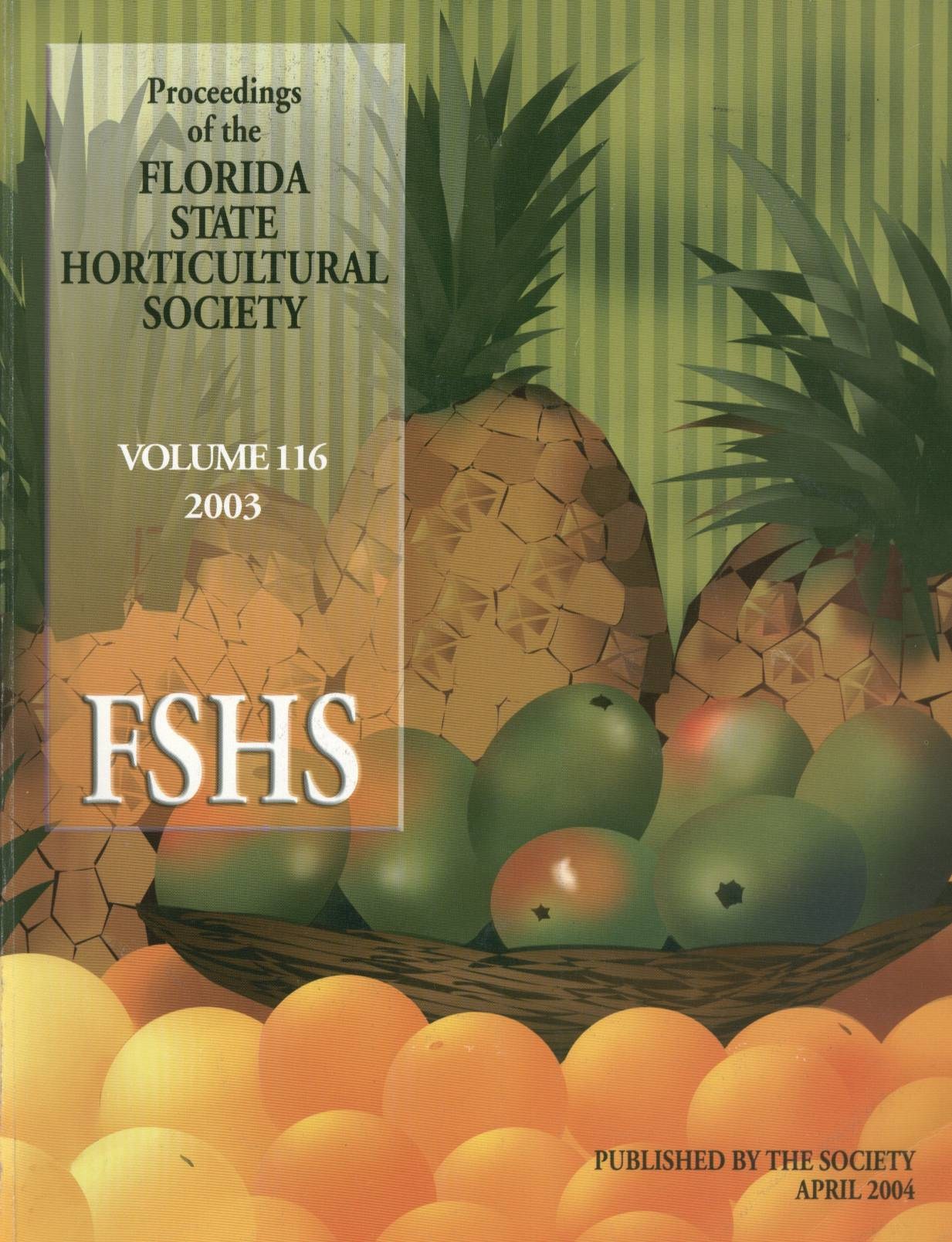Abstract
In 2002, a greenhouse study was conducted to determine the effects of different flooding durations on soil redox potential, and to compare the interaction of flooding and larval root weevil (Diaprepes abbreviatus L.) feeding on citrus seedling leaf stomatal conductance and root damage. The experimental design was completely randomized with two rootstocks (Swingle citrumelo (SWI) and Smooth Flat Seville (SFS)), four flooding durations (0, 10, 20, and 30 days), and larval feeding for 42 days. Plants were flooded, drained for a week, and then five neonate larvae per seedling were introduced onto the soils. Flooding significantly reduced soil redox potential (P 0.001); and flooding, rootstock variety, and their interaction significantly affected leaf stomatal conductance (P 0.001). After flooding, soil redox potential dropped from +200mV to below -100 mV within 1-3 days, and plant leaf stomatal conductance declined from 260 mmol m[sup-]s[sup-] to 60 mmol m[sup-]s[sup-] after 30 days for SWI. Swingle appeared to be more tolerant of water stress by flooding than SFS. Survival of Diaprepes larvae was higher in flooded treatments than nonflooded treatments (P 0.05). Flood damaged seedlings were more susceptible to root injury by larval feeding than nonflooded seedlings. Treatments flooded for 10 days had higher stomatal conductance and lower root injury from larval feeding than those flooded for 30 days. We conclude that negative soil redox potential and a decrease of leaf stomatal conductance might be useful as early indicators of plant water stress from flooding and root damage from weevil larval feeding.

